While reading the book “Tamarind City” I came across Mr Sriram V, who is doing tours of Chennai during Madras week. A few weeks back when I looked online for Mr Sriram V, I came across his blog “Madras Heritage and Carnatic Music”, where I learnt that on 18th August (today) he is doing a tour tracing the old fort wall of Madras. I never knew Chennai had a fort wall of significance. Curious I immediately contacted him and got registered on a nominal charge of Rs.600 including Breakfast. Mr Sriram runs his own business and out of passion for his city’s history does these tours only during this month (Madras week). He is a regular columnist in The Hindu writing on (what else) “Chennai”.
Madras High Court
We were asked to assemble in front of Madras High Court by 6AM which I did along with my co-brother.
![Fort-Wall-Tour-Chennai-August2012 (3) Madras High Court [மெட்ராஸ் உயர்நீதி மன்றம்]](https://venkatarangan.com/blog/wp-content/uploads/2013/03/Fort-Wall-Tour-Chennai-August2012-3.jpg)
Madras High Court [மெட்ராஸ் உயர்நீதி மன்றம்]
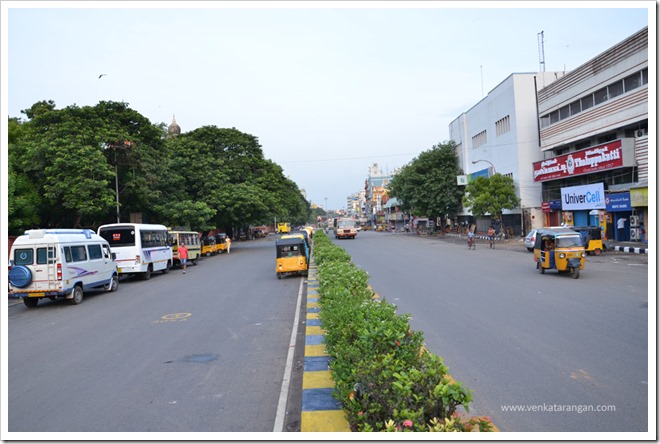
NSC Bose Road
We kept hopping on and off the vans with Mr Sriram sharing interesting history about this area where Madras got founded.
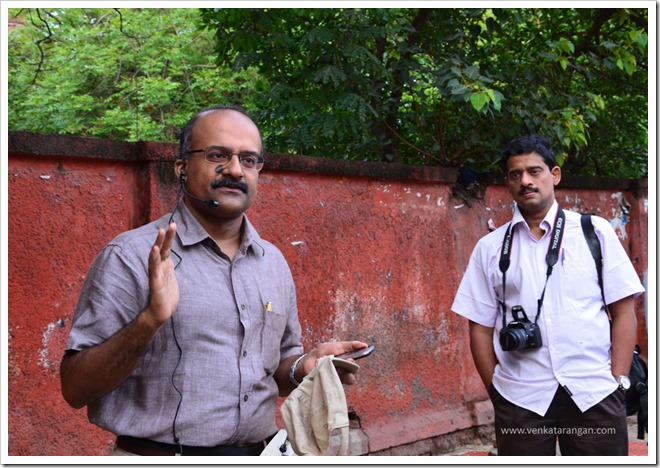
Mr Sriram V explaining the history of the Madras High Court
Clive Battery
Not much of the wall survives except in one place, so it was to be imagined purely from Sriram’s vivid description of where each of the seven gates stood in 18th Century. First one is at a stone in front of Parry’s Corner, then proceeding on the beach road toward Madras Port we stopped in front of what would have been “Clive Battery”.

Clive Battery
Then turning into Old Jail Road (under the Royapuram Flyover) we stopped at another end of Thambu Chetty Street, which was called as Pully Gate (Page 336 in Madras Rediscovered by S Muthiah Sixth Edition). Most places where we stopped, a small crowd gathered around to investigate what’s going on.
Madras Fort wall
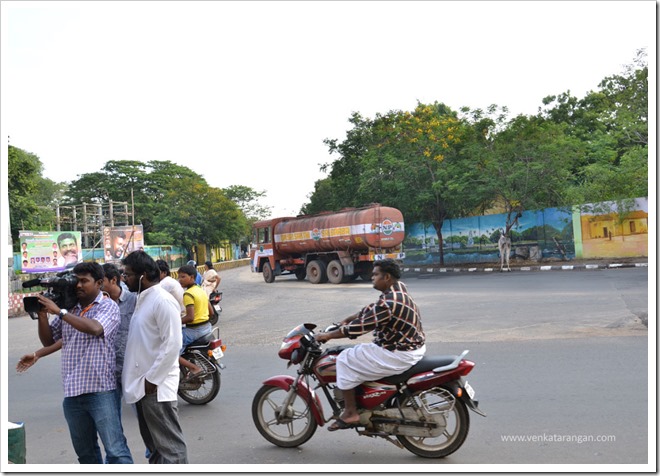
Thambu Chetty Street near the Royapuram Flyover
The next stop was Maadi Poonga (Terrace Garden), which is called so because it is a park on top of a terrace. The terrace happens to be the only surviving piece of the original Madras Fort wall built in 1772-1773. British built this wall soon after Hyder Ali plundered the George Fort area twice in 1767 and in 1769. The wall was built by Paul Benfield, a British Engineer & Contractor for over a million pagodas. In all history books he is referred as Notorious Paul Benfield including in Paul Mason’s book “The Men who ruled India” page no.70. He was involved in financial scandals including lending huge funds at 36 per cent interest to Carnatic Mohammed Ali who was put on throne by British to rule over this area. Paul Benfield had come out to Madras first as an engineer in East India Company’s service – getting himself dismissed, reinstated, suspended, reinstated, sent to London to answer charges, reinstated again. Finally after 18 years of joining he had a fortune of over half a million pounds. He is known for designing the plans for the Chepauk Palace which was built in 1768, which was the earliest attempt to integrate the domes and arches, the Mughal, Indian and European architectures in India.
![Fort-Wall-Tour-Chennai-August2012 (24) Maadi Poonga [மாடி பூங்கா]](https://venkatarangan.com/blog/wp-content/uploads/2013/03/Fort-Wall-Tour-Chennai-August2012-24.jpg)
Maadi Poonga [மாடி பூங்கா]
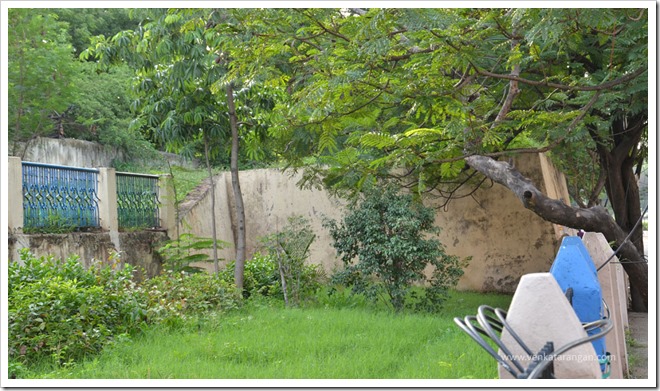
Madras Fort wall built in 1772-1773
Monegar choultry
The next stop was Broadway gate which is where a jail functioned in olden days and where today’s Bharathi Women Arts college is present.
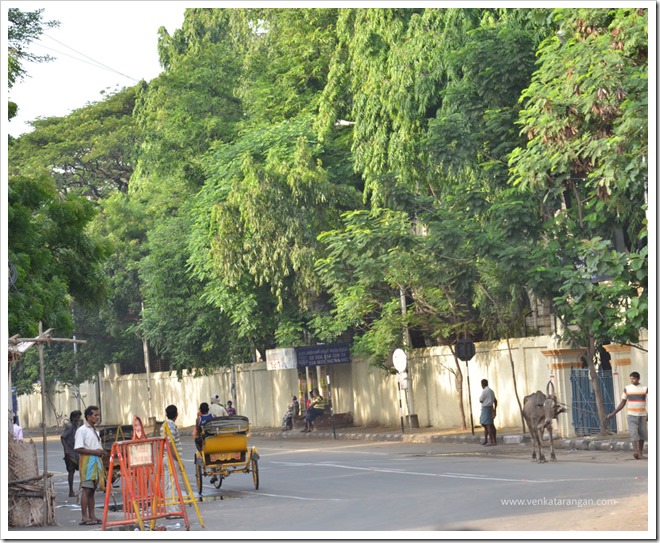
Bharathi Women Arts college
Then we went to stand in front of Monegar choultry which is opposite to the famous Stanley Medical College. Stanley Medical college came up in 1830 due to endowment by Raja Sir Ramasamy Mudaliar to serve the local people of Madras, as the only English Hospital then was inside the fort and was open only for Europeans. The college got its name as it was inaugurated by a British Parliamentarian Lt. Colonel Sir George Fredrick Stanley in 1933. Monegar Choultry had its origins much before, with a village headman, locally known as a ‘maniakarar’, establishing a gruel centre here in 1782 which grew over the years to be a place for destitute and seriously ill.
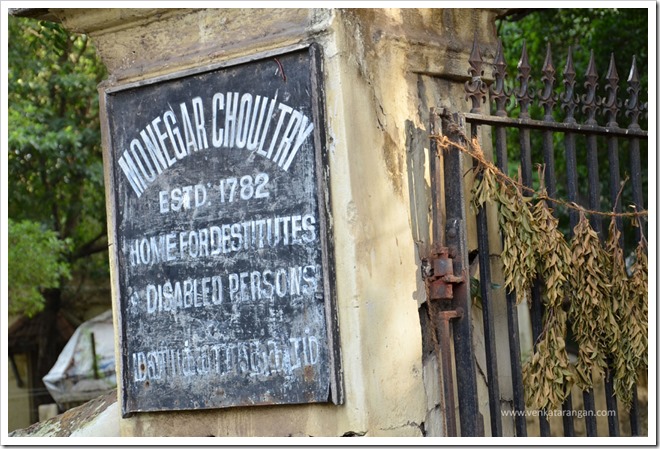
Monegar Choultry Estd:1782
We then travelled on Basin Bridge Road, then on to Walltax Road and stopped in front of Padmanaba Theatre (which is about to be demolished) near Telegraph Abboy Ln. We went through the area called as the seven-wells, where in 1772 was the first organised water supply of Madras began. It is told that on one occasion, Mysore ruler Hyder Ali’s troops tried to poison the water source one night.
Karunguzhi Parcel Case
Mr Sriram shared a story of a popular murder mystery that happened in this area in early 20th century which was written by the famous writer Randor Guy and in many other books (Famous Murder Trials by Subrahmanya Rajagopalan). It was “The Karunguzhi Parcel Case”, so called because on January 12,1934 6 parcels arrived at Karunguzhi railway station but were not claimed for few days. It turned out to be containing body of a 22-year-old young beauty identified as Seethammal. She came from a poor Brahmin Iyengar family and was married to a cook Parthasarathy employed in a temple. She soon eloped with one Ramanujam and settled in Peddu Naicken Street, which was in this area. The murder suspect was Ramanujam and the case generated lot of public interest and was heard before Sir Owen Beasley of Madras High Court, with noted lawyers of the day Sir Alladi Krishnaswamy Iyer appearing as well. He got a death sentence but due to his friends at high places and a strong campaign about Ramanujam’s innocence he walked a free man.
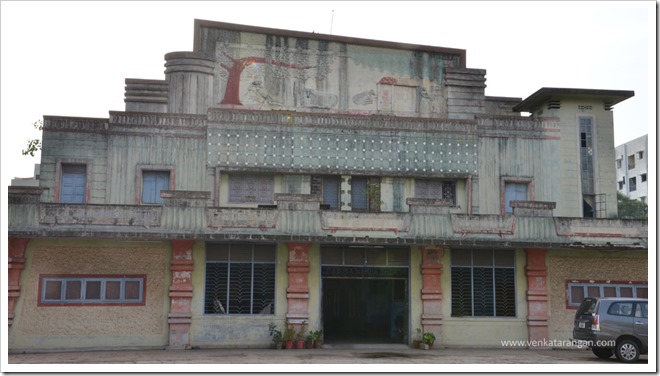
Padmanaba Theatre
Coming back to the Madras Fort wall, the construction of the wall was to be funded by a tax, giving the road its original name Walltax Road – now called as VO Chidambaram Pillai Road. The tax was opposed by the residents and the British Parliament coming in support to them withdrew the tax. By the 19th century, with British firmly in power in all parts of India the wall became redundant and started its decline, with the city growing on all sides.
As the last stop we were taken to the temple “Sri Satyanarayan Mandir” in Walltax Road/Rasappa Chetty Street corner where Chuckler’s gate would have been. The temple is run by Paramananda Doss Chota Doss Gujarati Dharamshala where Super Star(s) are rumoured to be frequenting for Divine blessings. Thanks to the priest there we got a great darshan and piping hot Kesari sweet.
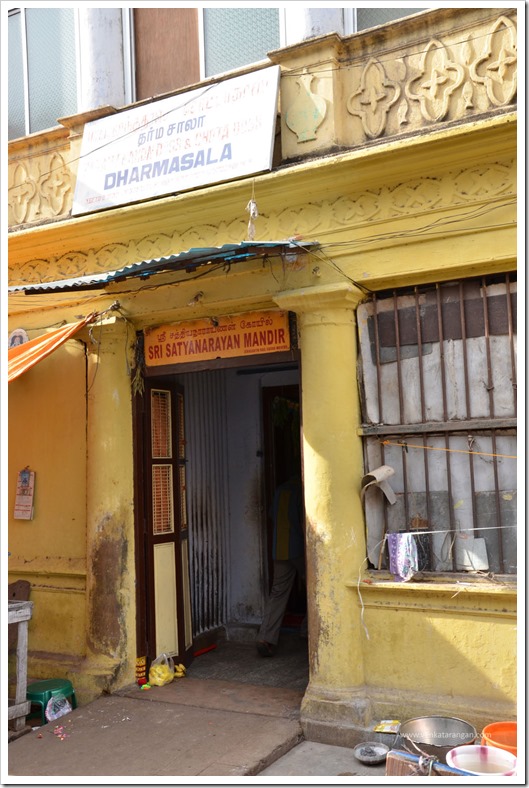
Sri Satyanarayanan Mandir – Dharmasala
After 3 Hours of going around where the Fort Wall in George Town would have been, we came back to where we started. Then we were led to Hotel Saravana Bhavan for a delicious Mini Tiffin (Breakfast). A perfect beginning for a day.
The entire photo album of pictures I took today can be seen here.
Mr Sriram’s own blog post of the tour can be seen here and his account of Fort wall here.

